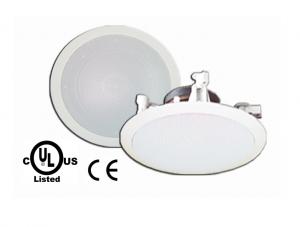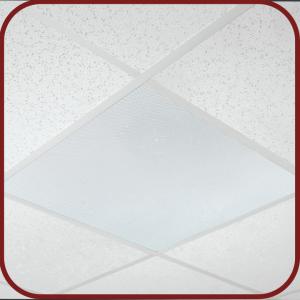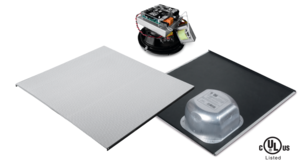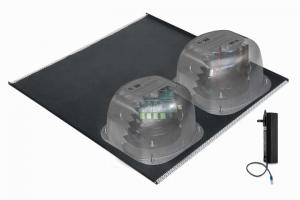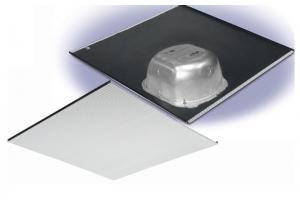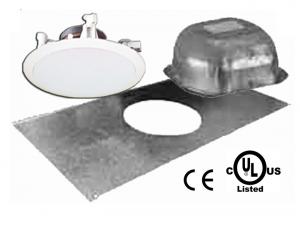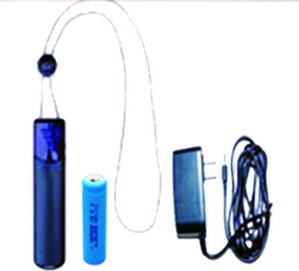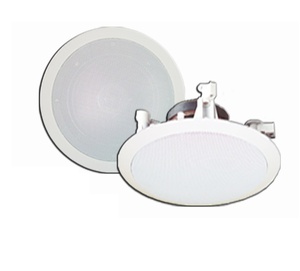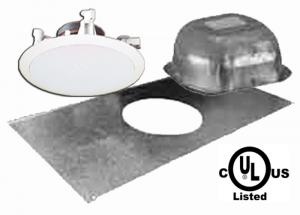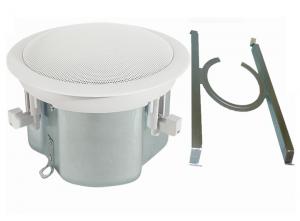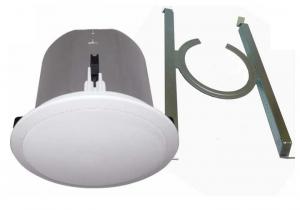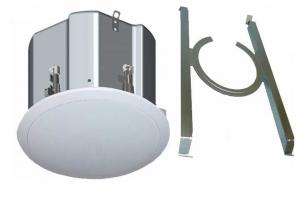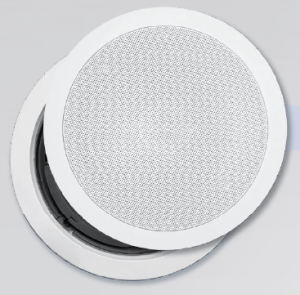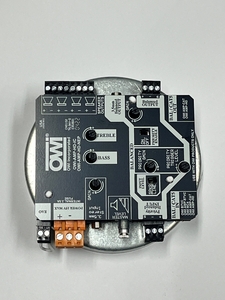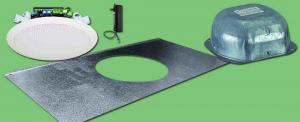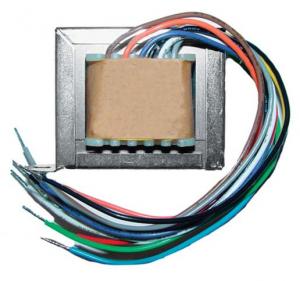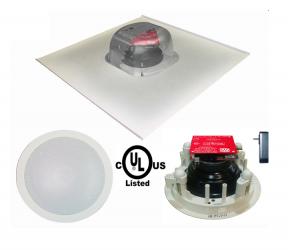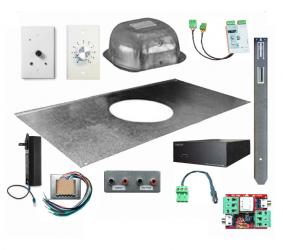In-Ceiling Speakers
Have you heard of in-ceiling speakers? Many people probably have not; if they have, they do not know much about them. But in-ceiling speakers are one of the smartest surround-sound system investments today. They also give an entertainment experience like no other.
Interested? Let’s learn more about ceiling speakers with a specific and detailed Q&A piece. Every question you may have answered here. Any questions you have in particular?
2X2-IW63 Drop In Full Grill Ceiling Speaker - Amplified and Non Amplified (Limited Quantities)
2X2VG-HDTR SERIES Two Source, Amplified, 6.5", Drop Ceiling Speakers on a 2X2 Tile(Limited Quantities)
70 Volts In-ceiling Speaker on a 2X2 Full Grill with Backcan (Limited Quantities)
8 Ohms OR 70 Volt Drop in Ceiling Speaker on a FULL GRILL 2X2 Tile with Backcan (Limited Quantities)
ICM4: 25/70/100 Volts - 8 Ohms, In-ceiling Speaker with built-in Backcan and Included T-bar Bracket.
ICM6730SET: All-N-One 25/70/100 Volts In-ceiling Speaker with Built-in Tile Bridge and Backcan
- What are Ceiling Speakers?
- What are In-Ceiling Speakers Used For?
- Do I Really Need In-Ceiling Speakers?
- What Are the Different Kinds of In-Ceiling Speakers?
- How Many Ceiling Speakers Do I Need in a Room?
- How Should I Position My In-Ceiling Speakers?
- Where Should I Position In-Ceiling Speakers in 5.1 and 7.1 Surround Sound Systems?
- Do I Need to Connect My In-Ceiling Speakers to the Mains Power Supply?
- Are In-Ceiling Speakers a Good Investment?
- Are Mono or Single Stereo Speakers Better for In-Ceiling Speakers?
- Should I Paint My In-Ceiling Speakers?
- Which Cable is the Best for In-Ceiling Speakers?
- Do I Need Fire Hoods for My In-Ceiling Speakers?
- Does Humidity Affect In-Ceiling Speakers?
What are Ceiling Speakers?
Ceiling speakers are speakers that are cut and mounted into the ceiling above a room. They are a permanent fixture of a room and often have to be installed. The quality of in-ceiling speakers can range from background listening options to full audiophile level speakers as part of a surround sound system.
What are In-Ceiling Speakers Used For?
In-ceiling speakers are used to creating a better sound experience, similar to all other kinds of home surround sound systems. The added layer of sound they provide is effective in creating a resonant, immersive sound that flows throughout the rooms of a building, and in this case your home. If you love entertaining, in-ceiling speakers will provide a powerful yet subtle surround sound experience perfect for both indoors and outdoors.
Do I Really Need In-Ceiling Speakers?
If you love to enjoy your entertainment, enjoy immersing yourself in movies, surround yourself with your favorite music, and host guests; yes! In-ceiling speakers take your surround sound system to the next level. They are the missing step towards achieving a perfect surround sound experience.
What Are the Different Kinds of In-Ceiling Speakers?
There are:
- Active ceiling speakers
- Passive mono ceiling speakers
- Passive stereo ceiling speakers
Active ceiling speakers are connected to the main supply because they have their own amplifier. However, you may want to avoid them because you are limited to the all-in-one speaker brand's selection of speaker types and sizes.
Additionally, it might become costly for spaces requiring four speakers because you will need to purchase two master pairs, as opposed to some other systems that allow you to directly connect four passive speakers to one amplifier.
Passive speakers are better for in-ceiling speakers. They can be connected via cable or cables to an existing amplifier. They are more flexible and take up less power.
How Many Ceiling Speakers Do I Need in a Room?
Ceiling speakers are often sold in pairs. Mostly, this just provides better sound coverage since we have two ears. On a more technical level, they are sold in pairs so they can be set up as a left and right stereo pair, regardless of whether they are mono or stereo.
However, for larger spaces, consider adding 4 smaller speakers rather than 2 larger speakers. Four speakers will balance the audio better and are a good number to incorporate into your existing surround sound system.
But remember, one of the most important things about audio is how you feel about it. You can add or reduce this number depending on the effect you want to create.
How Should I Position My In-Ceiling Speakers?
It is advisable to set the ceiling speakers along the length of the room, spaced equally from each wall. For the best stereo separation effect, they must also be at least 2 meters apart from one another.
Consider installing a single stereo ceiling speaker right in the middle of the room if the speakers will be fewer than 2 meters apart from one another.
Another rule to note is to use one pair of ceiling speakers in spaces larger than 3 m2, and two pairs in spaces larger than 5 m2 for a more well-balanced sound. Then, simply follow the rules mentioned above.
Where Should I Position In-Ceiling Speakers in 5.1 and 7.1 Surround Sound Systems?
A 5.1 surround sound system is where two speakers are positioned on either side of your sitting position, and three are positioned in front of the tv. These three are put in such a way that one is right in front of the tv, and the remaining two are on either side.
A 7.1 surround sound system is similar to the 5.1, but it has an additional pair of speakers between the tv and your sitting position.
To add in-ceiling speakers in a 5.1 system, you'll need two speakers to provide rear surround-sound coverage.
Install two left and right speakers behind or directly above where you will be listening. From here, all you'll need is a center channel speaker placed squarely in the middle of the left and right front speakers on either side of your TV. To properly project dialogue, this center channel should ideally be placed directly over the television.
For a 7.1 surround sound system, place two extra surround speakers between the front and back surrounds.
Do I Need to Connect My In-Ceiling Speakers to the Mains Power Supply?
Unless your speakers are active, no. Most in-ceiling speakers are passive, so they will simply be connected to the main amplifier and redistribute the sound. This situation is ideal.
Are In-Ceiling Speakers a Good Investment?
Yes. In-ceiling speakers are easy to maintain and rarely need replacement. You also do not need to struggle to find quality speakers at affordable prices. The improvement in sound experience that they provide is also worth every penny. And once you experience the enhancement, you will not want to ever go without them. Installing in-ceiling speakers is also not as expensive as other home installations.
Are Mono or Single Stereo Speakers Better for In-Ceiling Speakers?
Mono speakers provide the left and right sound channels through two different speakers. Single stereo speakers provide both of these sound channels through a single speaker.
Usually, most people will have a pair of speakers to function as a stereo pair. But in small rooms where two speakers may seem a bit much, a single stereo speaker will work perfectly. Therefore regardless of the type of speaker you choose, a good experience will only be achieved if you use it appropriately.
Should I Paint My In-Ceiling Speakers?
If you want your speakers to match the overall look of the room or simply match the ceiling, yes! In most cases, you can remove the speaker's grille and spray-paint it with high-quality paint.
Spraying tiny coats of paint is crucial to avoid clogging the speaker grille's perforated holes. Make sure the grille holes are not filled with paint; doing so will reduce the speaker's sound quality. Instead of using one thick layer, use multiple light applications of high-quality spray paint.
Which Cable is the Best for In-Ceiling Speakers?
It's advisable to use a 16 gauge 2-core speaker cable. This is the industry standard and is used for the majority of installations. If a single cable run is longer than about 35 meters, that's the only time you might need to run a better cable.
Remember that if an audio transmission is transmitted too far, the sound quality may suffer. In this situation, upgrading to a 14-gauge cable is advised. Installing the cable should be done in parallel.
Do I Need Fire Hoods for My In-Ceiling Speakers?
Fire hoods are used to protect the in-ceiling speakers in the event of a fire. They engulf the back end of the speaker so that fires stay clear of the ceiling void where the speaker is fitted into.
Fire hoods are required by law for any ceiling speakers put in areas where there is a livable room above. In the case of a fire, they aid in maintaining the structural integrity of ceilings.
Another advantage of speaker hoods is that they offer a kind of back box that improves sound and substantially reduces sound leakage. So, if you want to crank up the volume, you won't have to annoy your neighbors.
Does Humidity Affect In-Ceiling Speakers?
What if you live in a humid area or want to have some in-ceiling speakers in a place like a bathroom?
The majority of the speakers offered in the market today are steam and humidity-resistant, making them perfect in bathrooms and kitchens, as long as they do not get any water directly on them. When purchasing ceiling speakers, it is advisable to verify details like these with your supplier or electrician if you still have any doubts. Better safe than sorry!
